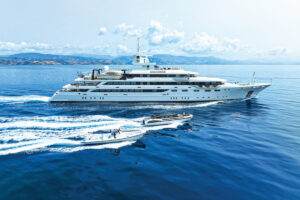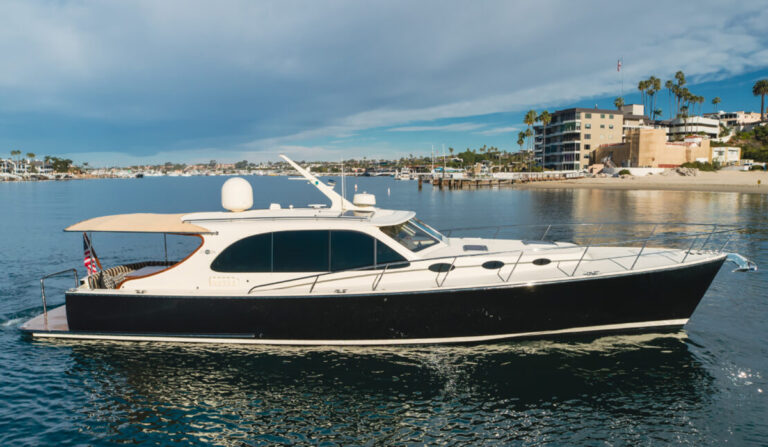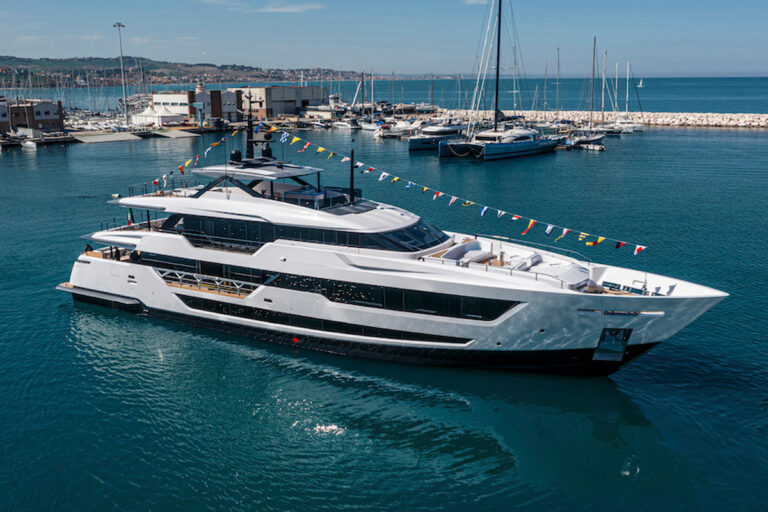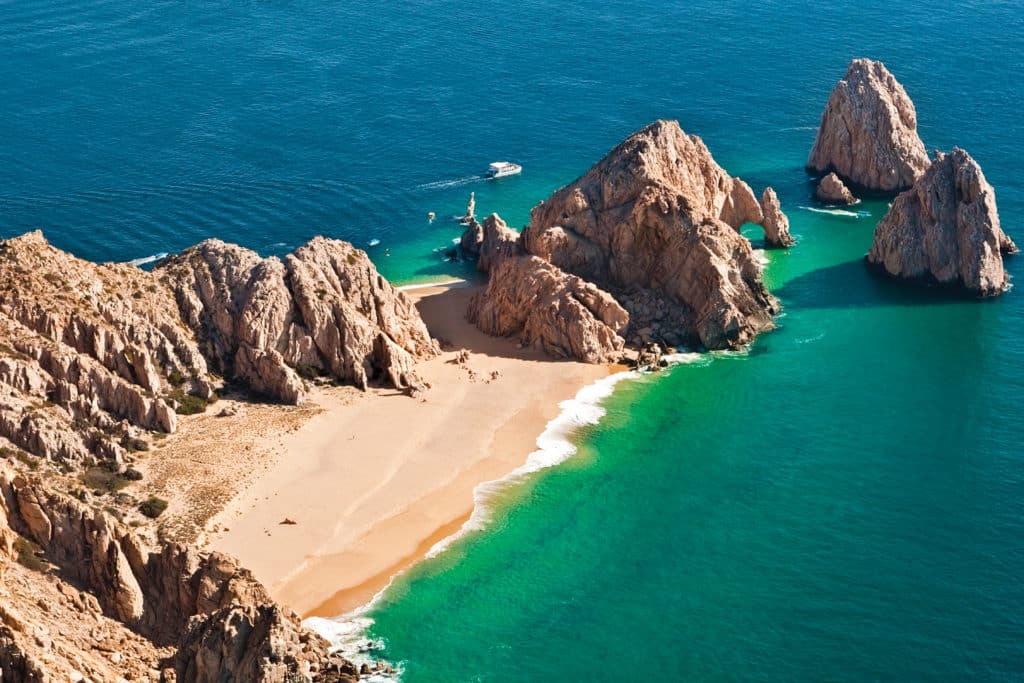
The migration begins each October, and it continues, sometimes, for 6,800 miles across the Pacific Ocean. The warm waters of Mexico’s Sea of Cortez, along the interior of the Baja Peninsula, are where the pregnant gray whales are heading; by about Christmastime, the first have arrived. And when the calendar turns to February and March — the height of yacht charter season in the Sea of Cortez — the protected lagoons have become a playpen for the world’s newborn gray whales.
Amazingly, only a handful of charter clients get to experience this scene each year. If even a half-dozen crewed yachts are available in this part of the world every winter, it’s a lot. “There’s not much charter business there, so the boats that do go there, it’s because the owners want to go there, or they’re passing through on their way along the West Coast,” says Amy Wachmann, a charter broker with Northrop and Johnson who has expertise in West Coast itineraries. “Smaller boats may stay there, but the bigger yachts come and go.”
The Puerto Vallarta area is sometimes marketed for charter, but the Sea of Cortez is the region’s best spot to book an itinerary, Wachmann says. It’s protected, which means you will have less chance of a run-in with weather, and it’s simple for most Americans to make travel plans to meet the yachts at the resort area of Cabo San Lucas, on the southern tip of the Baja Peninsula where marinas are located.
“It’s one of the last untouched areas that’s close to the States where you can get there easily, be with the wildlife and not see anybody,” she says. “Outside of Cabo, there’s no nightlife, but if you are looking for a place to get away from it all, this is awesome.”
The scenery, as you can see in the photograph above, is a lot different from what winter charter clients in the Caribbean are used to seeing. Forget about lush, green, rainforest-covered islands. This part of Mexico is desert. Red rocks and sand alternate with the aquamarine sea. And there’s a bonus for anyone who has ever been stuck on a yacht in the Caribbean on a muggy afternoon: Humidity is not a factor here.
The real draw, though, is wildlife. You’ll see whale-watching and scuba boats, but not in overwhelming quantities.
“You can still swim with the sea lions, and they’re still coming right up to you,” Wachmann says. “They’re not afraid of you. The fishing is good, you can have big-game fishing — you’ll see big sport-fishing boats there — and the snorkeling is great. It has one of the last shallow-water reefs on the West Coast. It’s in Cabo Pulmo. And there’s a lagoon where the gray whales go in and bring their babies, a little north of Laredo. You can’t swim with them, but you can get pretty darn close. There’s a few protected areas along there for a lot of the wildlife too. The blue whales, the fin whales, the humpback whales, they all come there to have the babies.”
GETTING THERE
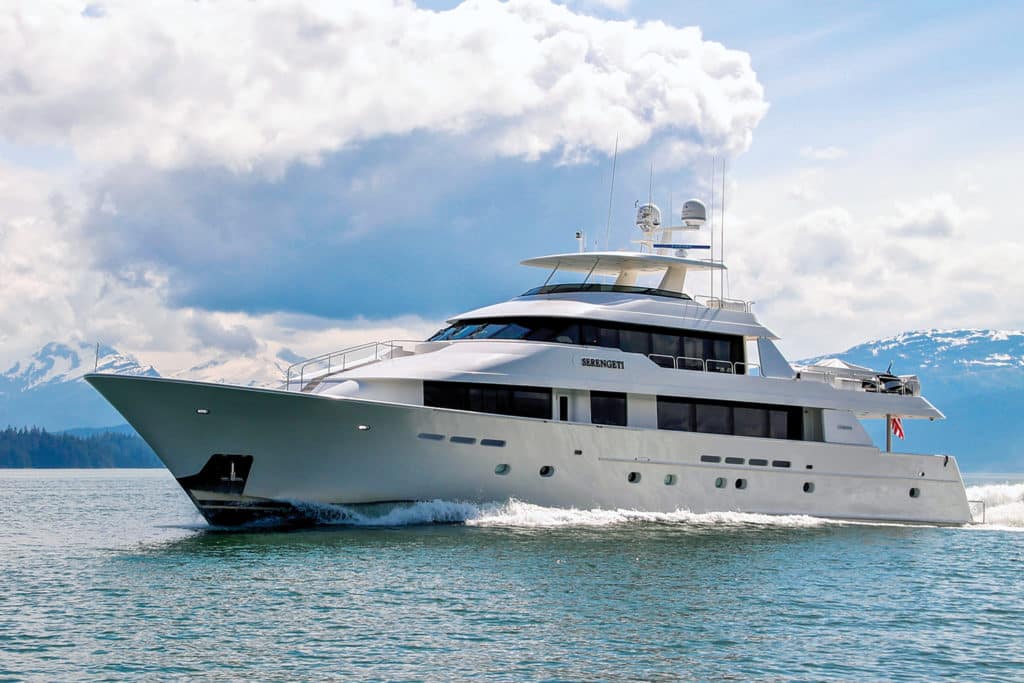
Serengeti
Serengeti originally was built for late-night television host Johnny Carson. She has a strong track record for charter all along the West Coast, including Alaska, and plenty of prior-client references available. In Mexico, she offers itineraries all along the Baja Peninsula.
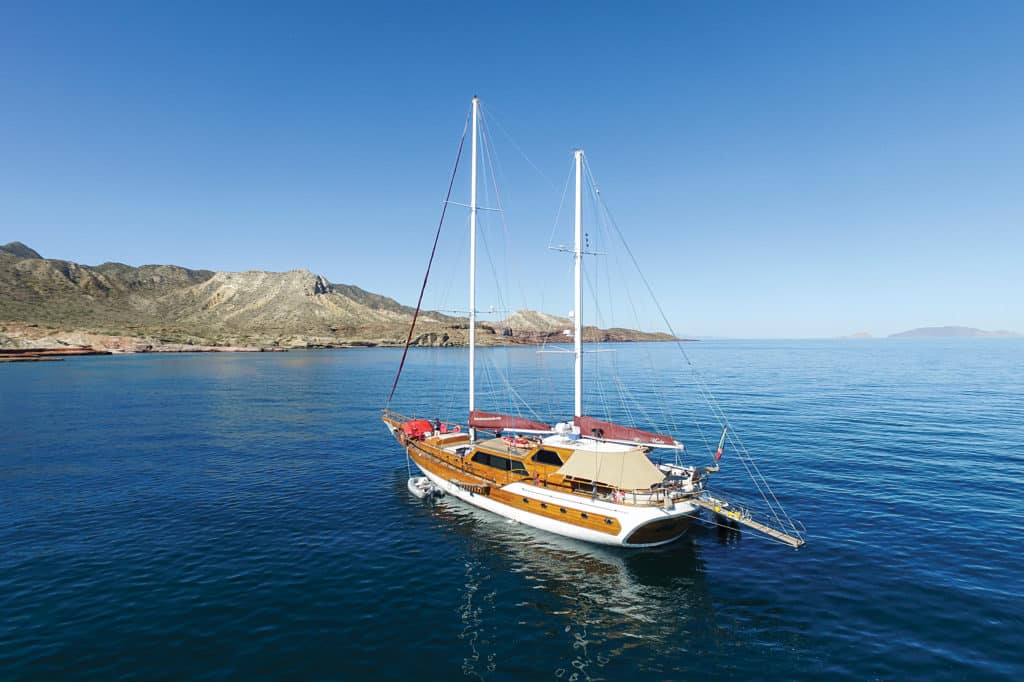
Besame Mucho
Besame Mucho received some upgrades about a year ago, including a 28-foot Scout tender. Guests can walk to the edge of her bowsprit, a great spot for photographing dolphins, whales and seals.
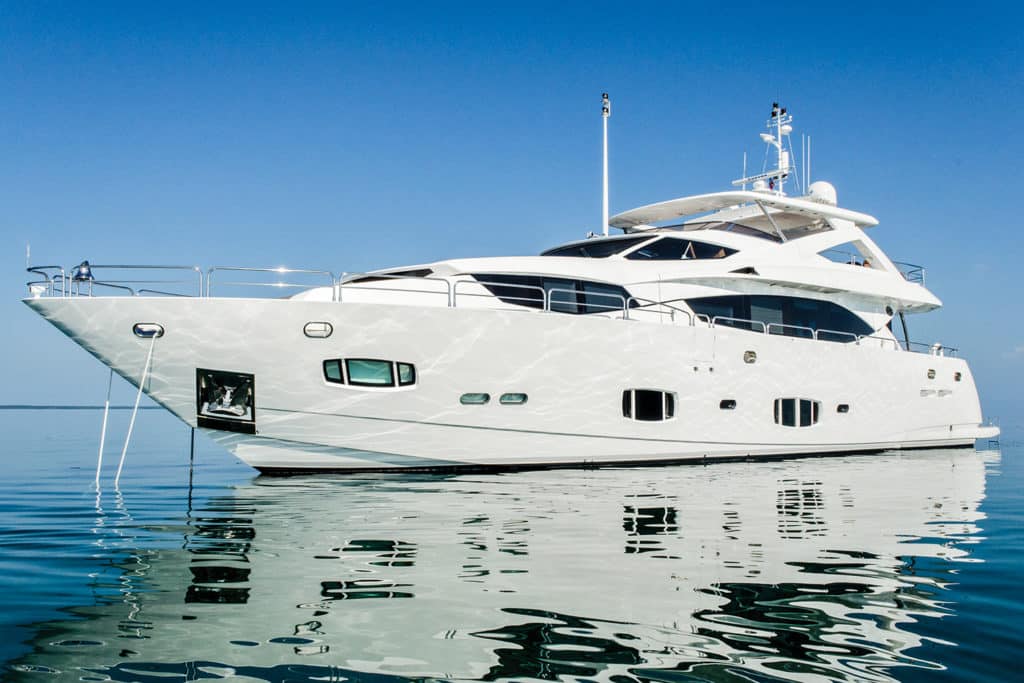
Emrys
Emrys has an on-deck master stateroom as well as a full-beam VIP, in addition to a pair of twin-berth staterooms for kids. Couples who want to split the charter rate each get a sizable space to relax.


